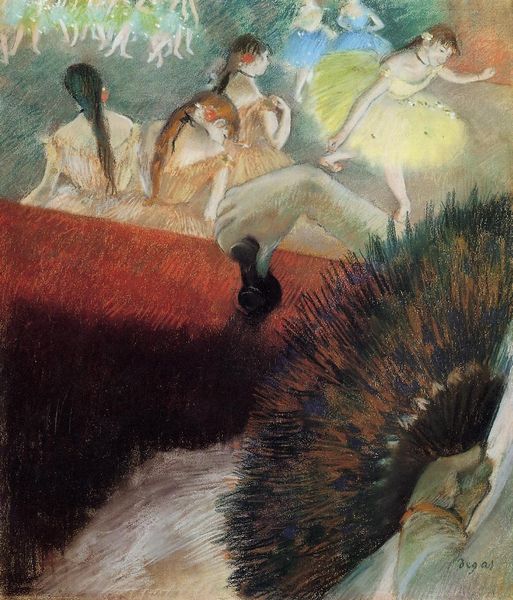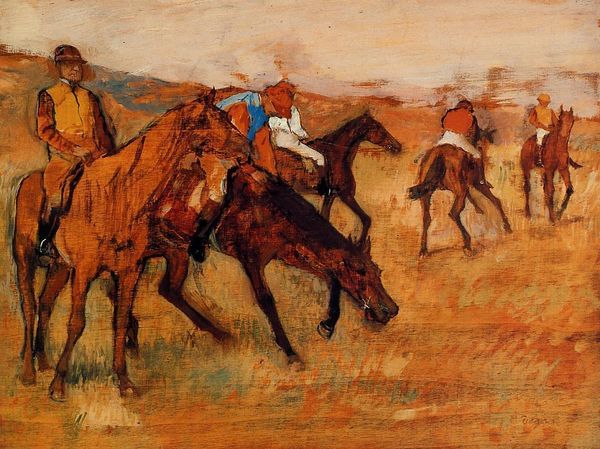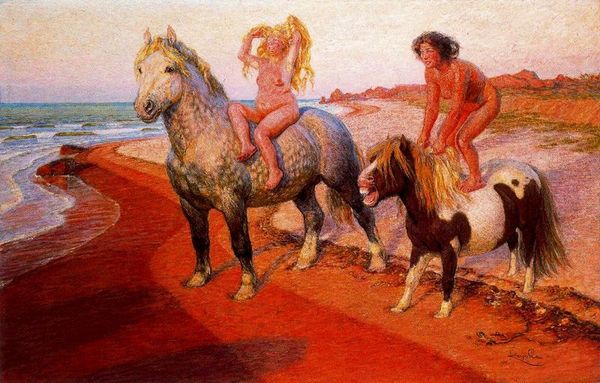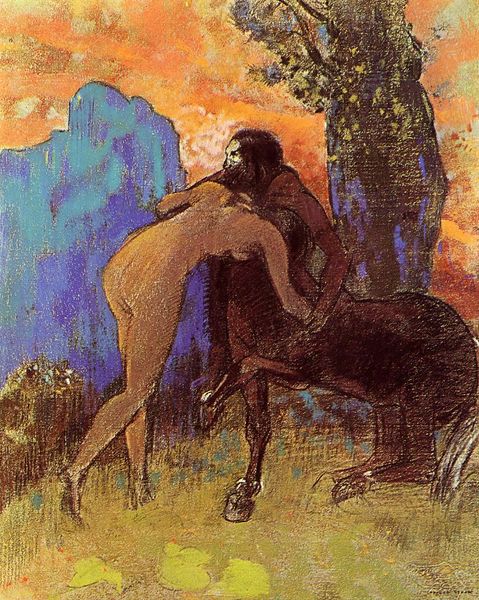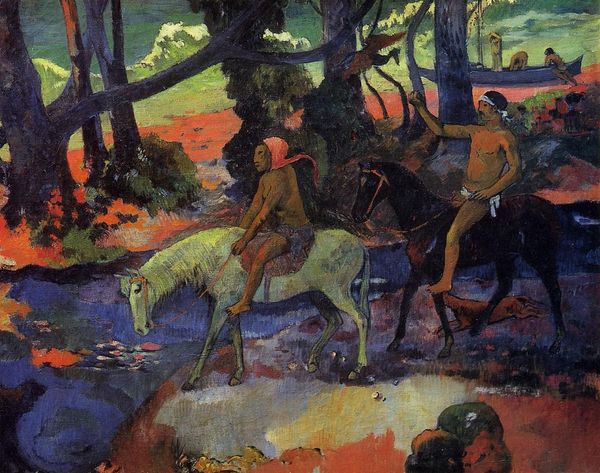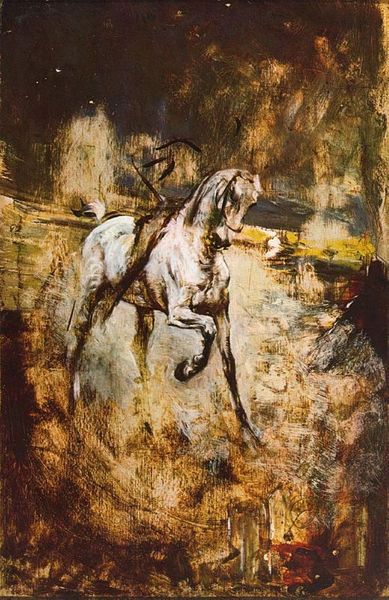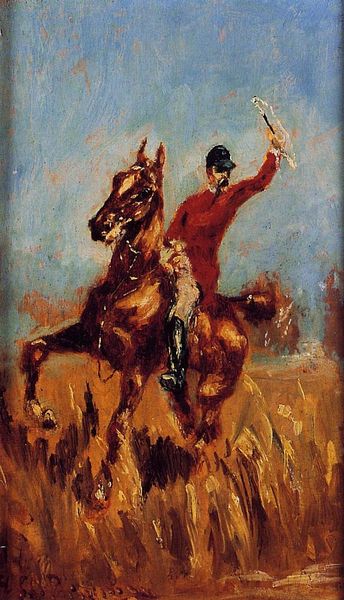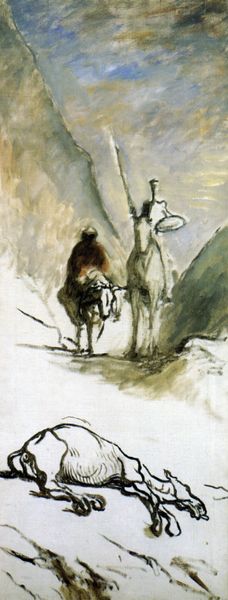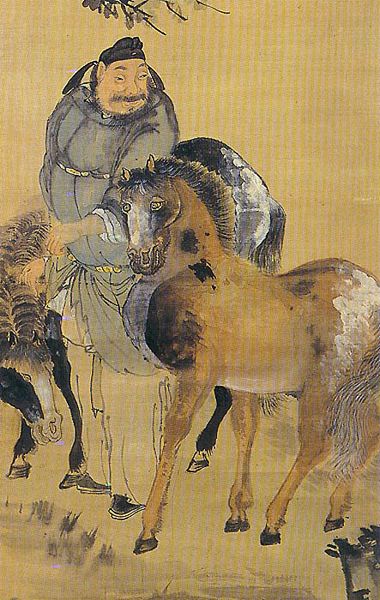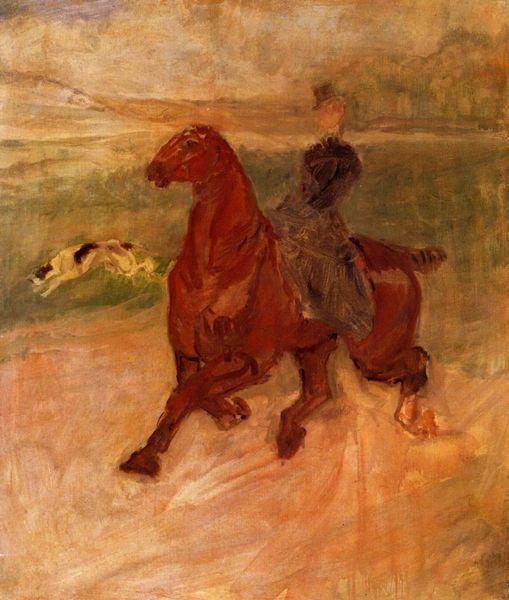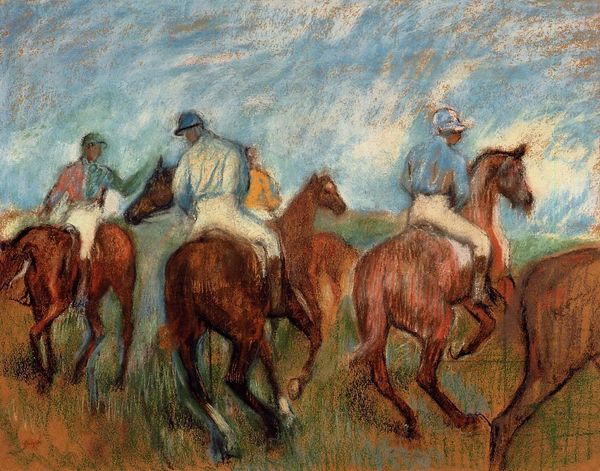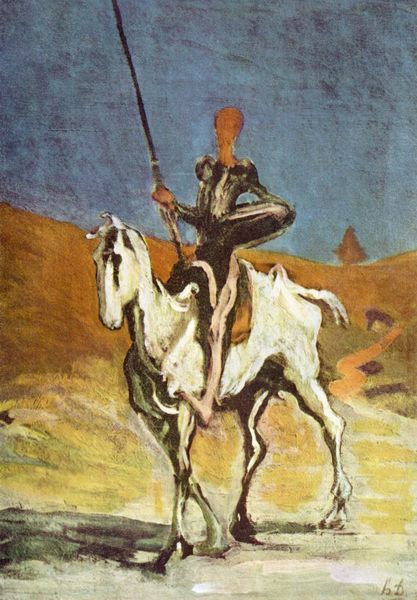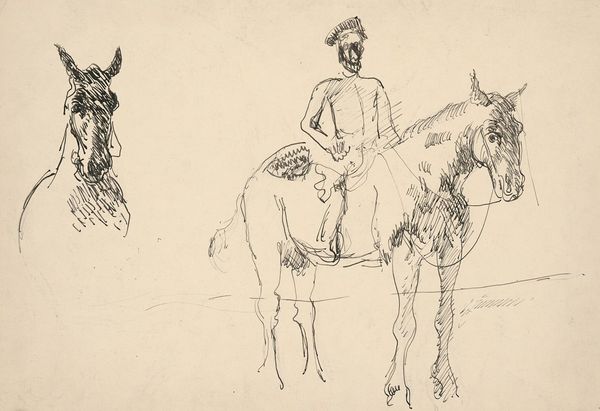
Copyright: Public domain
Curator: Looking at Henri de Toulouse-Lautrec's "The Procession of the Raja," painted around 1895, one immediately notices its ochre dreaminess. It's a painting of implied wealth and status. Editor: The Raja is indeed processed in luxury, with the artist’s emphasis on line and loose brushwork adding dynamism to the composition. What material elements underpinned the artist’s access to subject and materials? Curator: Lautrec moved in elite circles; his access stemmed from his own aristocratic background, of course. "The Procession of the Raja" wasn't commissioned. It demonstrates an active participation in the aesthetics and commodities from the French colonial milieu. This aesthetic choice involves material sourcing and economic structures deeply entangled with colonial power. Editor: I notice that he does not overwork the scene; his choices create a flattening of depth. The eye follows the elegant line of the figures: the horse, the elephant, then led by smaller, predatory figures like tigers, all placed strategically with respect to the edge of the canvas. It creates visual pleasure for the viewer. Curator: Absolutely, the flat planes amplify its decorative nature, and the visual pleasure is undeniable. It serves as a compelling indicator of how exoticism and imperial exploits were aestheticized, commodified, and consumed by European society during this period. Consider, for instance, where the paints came from, and what those materials represent culturally. Editor: The quick application of paint and simplified forms does seem to capture movement well. There is a semiotic language at play through which it reflects a culture with a particular set of norms, status, and aesthetic values in fin-de-siècle Paris. Curator: I agree, however, the artist does not necessarily attempt an act of portraiture. Lautrec, in depicting the exotic "other," might be regarded as reinforcing an uneven distribution of symbolic power that is part of a larger colonial enterprise of this time. Editor: An artwork layered in technique, material composition, and social context! Curator: It prompts thoughtful consideration of labor, consumption, and how materials signify complex, entangled systems.
Comments
No comments
Be the first to comment and join the conversation on the ultimate creative platform.
